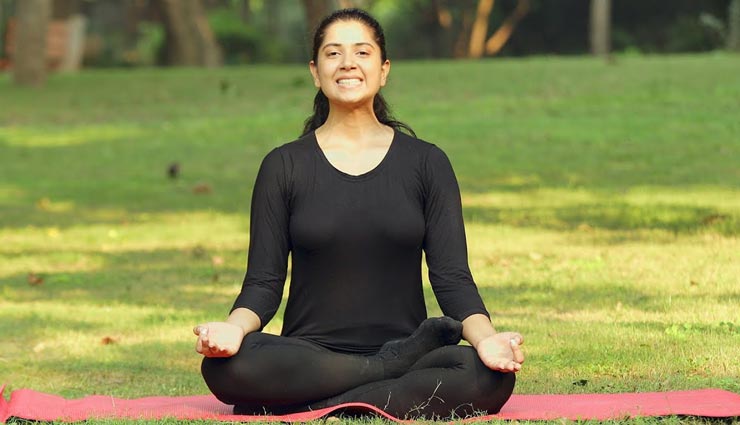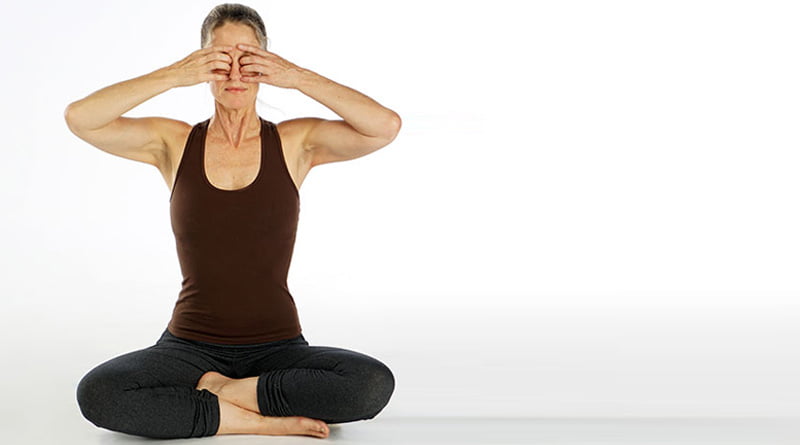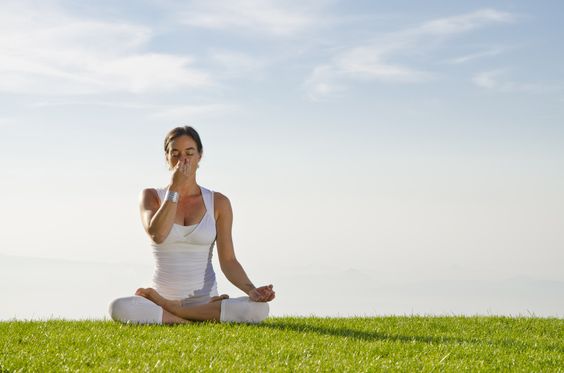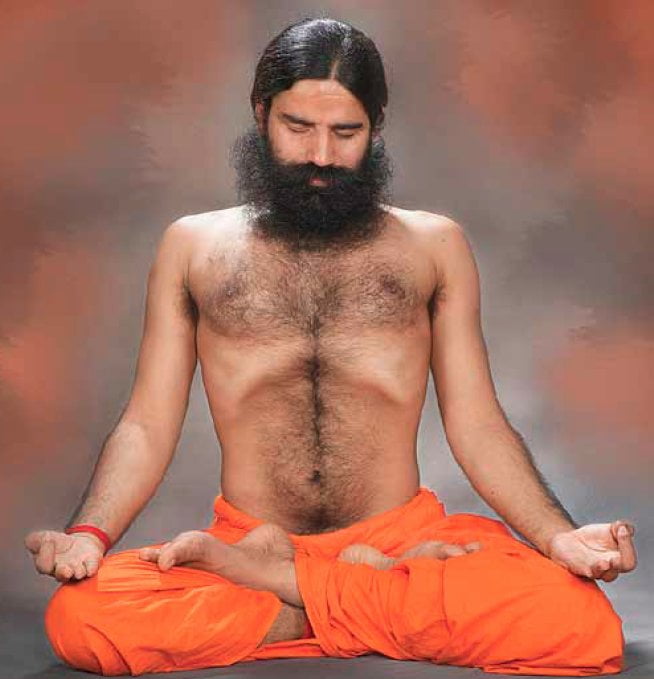In the traditional practice of yoga and Ayurveda, breath (or prana) is seen as the bridge between the body and the mind. Among the many breathing techniques in pranayama, Sitkari Pranayama stands out for its cooling and soothing effects. Especially beneficial during hot weather or after intense physical or mental activity, Sitkari helps to calm the body, balance the nervous system, and regulate internal heat.
Table of Contents
What is Sitkari Pranayama?
Sitkari Pranayama is a cooling breath technique where air is inhaled through the clenched teeth or the tongue, producing a hissing sound. The name “Sitkari” comes from the Sanskrit word “Sit”, meaning “to cool,” and “Kara,” meaning “that which does.” It is traditionally used to lower body temperature, reduce stress, and restore balance in the body’s pitta (fire) element.
How to Practice Sitkari Pranayama:
The steps to do Sitkari Pranayama are…
Step 1:
Choose a meditative seat like Sukhasana (Easy Pose), Padmasana (Lotus Pose), or Vajrasana (Thunderbolt Pose). Keep your spine straight, shoulders relaxed, and hands resting on your knees in Chin Mudra or Jnana Mudra.
Step 2:
Open your lips slightly. Gently press the upper and lower teeth together, and curl the tongue upward so that it lightly touches the roof of the mouth (optional, depending on the variation).
Step 3:
Draw in air slowly through the gaps between the teeth. This will create a hissing or “seet” sound. Feel the cool air entering your mouth and throat.
Step 4:
After inhaling fully, close your mouth and slowly exhale through both nostrils. Maintain awareness of the cooling sensation.
Step 5:
Perform for 5 to 15 rounds, gradually increasing the duration as your practice deepens.
Benefits Of Sitkari Pranayama:
The benefits of Sitkari Pranayama are…
1. Cools the Body and Mind:
Sitkari Pranayama lowers internal heat, making it ideal during summer or after intense physical activity. It’s also effective for people with high pitta dosha in Ayurveda (characterized by excess heat, irritability, or inflammation).
2. Reduces Stress and Anger:
By slowing the breath and activating the parasympathetic nervous system, Sitkari calms mental agitation and helps manage anger, anxiety, and emotional overload.
3. Enhances Digestion:
Unlike some other cooling practices, Sitkari maintains digestive fire while reducing excess acidity, making it useful for people with indigestion, ulcers, or heartburn.
4. Improves Focus and Clarity:
The practice brings attention inward and improves pranic flow to the brain, supporting concentration, clarity, and meditative awareness.
5. Purifies the Blood:
The cooling effect helps detoxify the blood, reduce inflammation, and support skin health.
Difference Between Sitkari and Sitali Pranayama:
Though often confused, Sitkari and Sitali are distinct:
| Feature | Sitkari Pranayama | Sitali Pranayama |
|---|---|---|
| Mouth Position | Teeth are clenched, tongue may touch roof | Tongue is rolled like a tube (if possible) |
| Sound | Hissing or “seet” sound | Whisper-like sound through rolled tongue |
| Applicability | Anyone can practice (no tongue roll needed) | Not suitable for people unable to roll tongue |
| Cooling Effect | Moderate to strong | Stronger cooling effect |
When to Practice Sitkari Pranayama:
Best Times:
- Early morning or evening
- During hot weather or after sun exposure
- After intense yoga asana or exercise
- When feeling angry, irritable, or overheated
Avoid During:
- Cold weather or if you are prone to a cold, cough, or asthma
- During fever, respiratory congestion, or sinus issues
- If you have low blood pressure or chills
Precautions and Contraindications:
- Avoid if you have asthma, cold, cough, or bronchitis, as cold air may worsen symptoms.
- Not recommended for pregnant women unless approved by a qualified teacher.
- Always breathe gently do not strain during inhalation.
- Practice in a clean, quiet, and warm environment for maximum benefit.
Scientific Insights and Modern Relevance:
Modern research supports that cooling pranayama techniques like Sitkari can:
- Reduce core body temperature
- Improve heart rate variability, indicating stress reduction
- Activate parasympathetic responses, lowering cortisol levels
- Enhance emotional self-regulation
In the context of modern lifestyle stress, digital overstimulation, and environmental heat, Sitkari offers a natural, side-effect-free remedy.
Conclusion:
Sitkari Pranayama is a powerful, accessible tool in the yogic arsenal for cooling the body, calming the mind, and balancing emotional intensity. Whether you’re a yoga practitioner, a busy professional, or someone seeking balance in daily life, incorporating Sitkari into your routine can bring about profound shifts in energy and awareness. Like all pranayama, its true benefits unfold through consistent, mindful practice.
FAQ:
Q. Can Sitkari Pranayama be done in winter?
A. It is generally not recommended during cold weather, as it can lower body temperature further and aggravate respiratory issues.
Q. How long should I practice Sitkari Pranayama?
A. Beginners: Start with 5 minutes
Intermediate/Advanced: Up to 15–20 minutes
Always practice in moderation and stop if you feel discomfort or chills.
Q. Can children practice Sitkari Pranayama?
A. Yes, children above age 7 can practice it under adult supervision, especially during hot weather or after physical activity.
Q. Is it okay to practice Sitkari Pranayama after meals?
A. It’s best to wait at least 1 to 2 hours after eating before practicing, to avoid interfering with digestion.
Q. Can I combine Sitkari with other pranayama techniques?
A. Yes, it can follow energizing techniques like Kapalabhati or Bhastrika to cool the system. However, allow a brief rest period between techniques.
Q. Will Sitkari Pranayama help with high blood pressure?
A. Yes, its calming and cooling effect can help lower blood pressure. However, it should be practiced regularly and not as a substitute for medical treatment.
Q. Is the hissing sound necessary during Sitkari?
A. Yes, the “seet” or hissing sound during inhalation is a key part of the technique. It indicates correct airflow and enhances the cooling effect.





